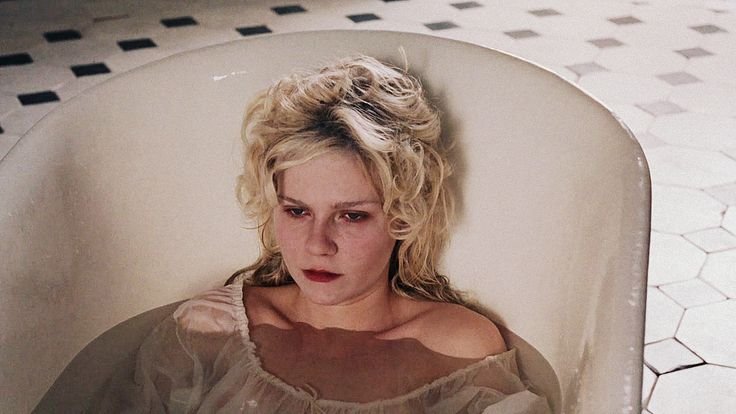Sofia Coppola’s Representation of Women Through Film
With the new Priscilla film out in theaters, Sofia Coppola’s name is buzzing again, and with good reason. Sofia Coppola, one of the best female directors in current times, has an impressive portfolio of cinematic gems such as Lost in Translation and The Virgin Suicides. Coppola excels in the art of atmospheric filmmaking; she intentionally takes a slower approach in the pacing of her films, lingering the camera on the setting to build the world around the characters and develop the scene. Her films undeniably have some of the most aesthetically pleasing color palettes, astounding soundtracks, and phenomenal costume design. Through her use of soft and feminine styles in film, she is able to shed light on the dark themes she explores in films, especially through her female protagonists.
Coppola’s films give us what many films have lacked for decades — the female perspective. Her films often focus on young women, and she portrays them authentically in ways that could not fully exist in films directed by men. Since the beginning of cinema, women have been portrayed in film as a product of the male gaze, as fantasy figures with little to no importance outside of the influence she has on the male protagonist. In recent years there has been more representation of women as conscious beings with more relevant roles, however, many of these are still directed by men. Coppola’s directing and writing style does something for women that most films have never been able to; she portrays the wants and needs of women along with a wide range of emotions. She focuses on encapsulating young women's full personalities in a way no other director does.
The recurring motif in her films is loneliness. She portrays the feelings of loneliness these women face not as much through dialogue, but rather through the world she creates around these characters. Coppola places her characters in large settings to emphasize how small they are. For example, in Marie Antoinette, Marie spends most of the film alone in a huge palace, or in Priscilla, Priscilla spends most of the film alone in Elvis’ huge mansion. Additionally, the lack of dialogue in her films adds a realistic element to her stories. Her characters act like people do in real life, without narrating every thought. She allows silence to develop the characters as they experience life and emotions like real humans do. The lack of speaking from her female protagonists could also be perceived as a representation of how silenced women have always been and how women have had to learn to process the world around them on their own.
Her casting is also very strategically done. All of her female characters are beautiful, yet they are all yearning for something to make them feel complete, demonstrating how little importance physical beauty has to women at their core. This could also support how an emphasis on physicality can oftentimes repress women more as they are seen as nothing except for their attractiveness.
Sofia Coppola’s films demonstrate her commitment to exploring the depth and complexity of the female experience. Her signature visual style and nuanced understanding of the human condition aid in not only creating a very visually pleasing cinematic piece, but a thought-provoking commentary as well. As a woman, Sofia Coppola’s films are some of the few films I feel I have ever been able to truly connect to the characters and their feelings. Priscilla definitely resonated with me, and if you haven’t seen it yet, watch it and let it resonate with you too.
Strike Out,
Writer: Daniella Garcia-Novas
Editor: Blake N. Fiadino
Tallahassee



